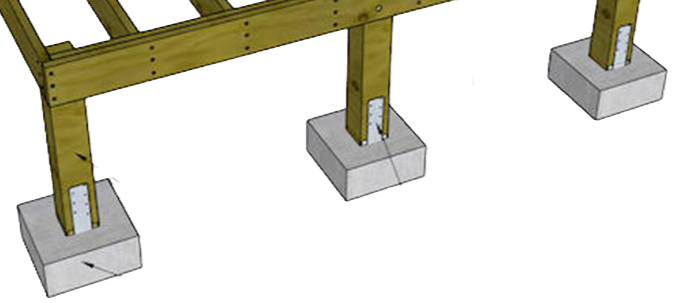Building a Strong Data Management Program
- Adriano Marini

- Aug 6, 2024
- 4 min read
Updated: Jun 24

At the beginning of the summer, my poor 30+ year old garden shed had some serious issues and needed to be retired. It served its purpose over the years, but the roof was leaky and wasps were eating the exposed wood. So, with a little elbow grease and some extra hands, I ripped down the old shed to make way for a new, more robust garden shed.
After doing some research, I settled on a plastic shed from a major Canadian retailer. The website had great reviews, and it had more than enough space. I was very excited to get started on my new shed, until I started to look in the box and I was confused. For some strange reason, there was no floor in the box!
I was trying very hard to figure out how this retailer could sell a CAD $1,000+ shed without a floor. To me, it seemed like missing such an important part of the puzzle made the whole errand useless. For something that needs to be structurally stable to survive an Edmonton winter, I thought to myself that missing such a key component was only going to ruin this shed's chances of survival.
As I was thinking about my predicament, I realized that building a shed is very similar to building an effective data management program in your organization. All of the pieces need to be there, expertly crafted and effectively assembled in order to protect your assets (whether it's data or garden tools).
Let's break this metaphor down into components:

The foundation underneath the shed is a key component that may be overlooked. Without a strong foundation, the shed cannot stand, or if it does manage to stand, it will be shaky. The foundation of your data management program is a robust set of policies, procedures, and practices that support your program. Even as simple as an acceptable use policy for your data can go a long way to protecting your assets and providing the foundational structure for the rest of your program.

The floor (or base) helps to carry the assets stored inside the shed. If the assets don't have a place to sit, they are in disarray, or potentially might be subject to loss. In the case of data, the 'floor' of your program is the technical tools that store your data, whether it be tools like the Microsoft Fabric or SharePoint Online. Tools are supported by the policies / procedures / practices of the foundation and should be configured in a way that aligns with and builds on that foundation. Having the right tools properly configured is important, as without a 'floor', the items built on top risk falling apart.

The walls and doors keep your assets contained and in a safe place but allow secure access to the assets through the door. The walls and door represent the security layer, with tools like Data Loss Prevention policies, Access Control, and other security features of modern platforms that keep your data safe. Building strong 'walls' around your data is an important consideration as the security of your most valuable asset is paramount. Building strong 'walls' requires a host of tools and effort, but can be simplified with tools like Microsoft Entra, Microsoft Priva, and Microsoft Defender. These tools, and many others on the market, can help seal the cracks in your walls, preventing your assets from getting out and preventing the wrong people from getting in.

The roof covers everything, provides structure, and is ultimately responsible for the protection of your assets. But the roof is also a key point of failure given specific stressors and a different role in the overall structure. The roof leans on the walls, floor, and foundation to be held up, but also provides the needed protection. Ultimately, the 'roof' represents training and change management for your user base. You can have a strong foundation, sturdy walls, and a tough floor, but if the roof is weak, your assets are still not safe. We cannot underscore enough the importance of this layer, and you will find significant benefits with an effective implementation of a training and change management program.
Once you have the structure, you should be able to articulate what tools are going in the shed. As you put stuff in the structure, it's important to take note of and understand what is going back in (and maybe what is going in the garbage initially). This is a monumental task when translated into a data management program, but take this with a grain of salt. It might seem overwhelming at first, but there are many ways you can inventory and get an understanding of your data using tools and techniques that require less effort. You don't necessarily need to examine each data set to bring it back under control. By using these novel tools and techniques, you can better understand your data landscape without spending significant time staring at data.
Another issue you might find is how full the shed is. I am well aware that my shed has a lot of stuff inside that I do not need, and hence, I need to execute some disposition of old junk. The same can be said for your data management program, it is important to understand what data you own, where it is located, and its characteristics. In this way you can make better lifecycle decisions if you need to curtail some data to make room in your platform, or to fulfil policy / regulatory requirements.
While the four layers may seem simplistic, each is pivotal and complex in its own way. To create an effective Data Management program, time and effort is required to thoughtfully develop each layer. Do not be afraid of working on some of the layers in parallel, as sometimes working on multiple items at once can help reveal synergies and accelerate the overall work.
Whichever layer you are at, Cadence Solutions is here to help. Much as I needed assistance to tear down my old shed and build a new one, having expert help on any layer of the project can accelerate the work and bring in best practices you may not have considered. Feel free to reach out for any questions or guidance on your current layer and your next steps.




